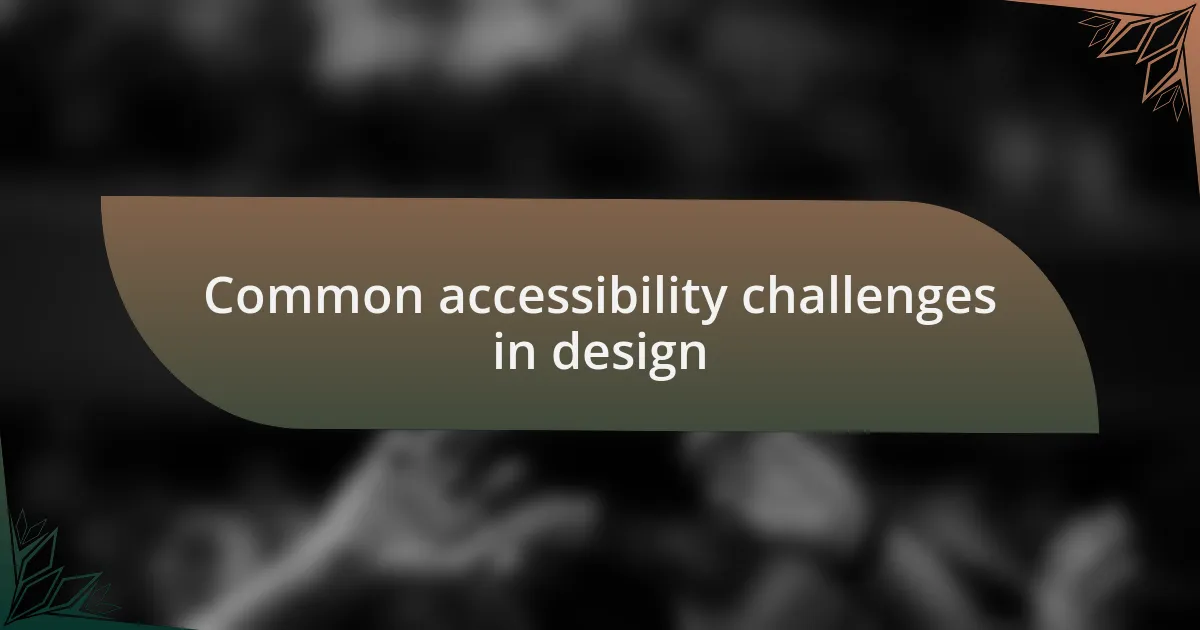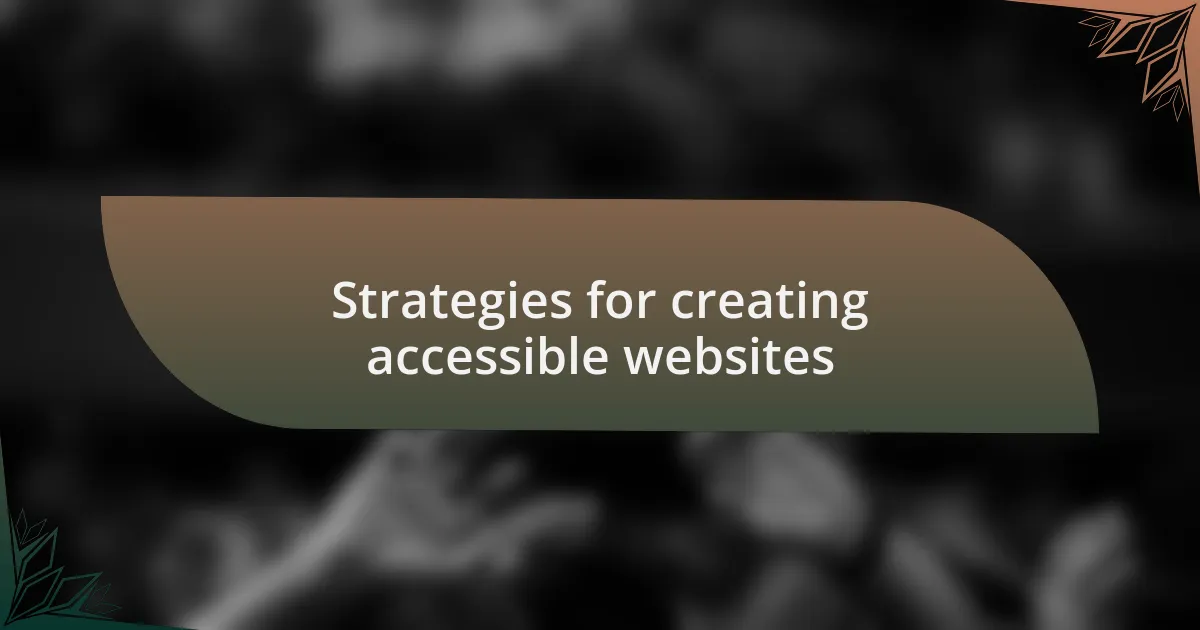Key takeaways:
- Understanding web accessibility is essential, as it benefits not only users with disabilities but enhances the overall user experience.
- Common challenges in design include inadequate color contrast, navigability of interactive elements, and lack of text alternatives for multimedia.
- User testing with individuals who have disabilities is crucial for identifying accessibility needs and improving website usability.
- Utilizing tools like WAVE and Axe, alongside manual reviews, ensures a comprehensive approach to web accessibility testing.

Understanding web accessibility principles
Understanding web accessibility principles is crucial for creating inclusive online spaces. I once worked on a project where feedback from visually impaired users opened my eyes to the importance of alt text for images. What seemed like a small detail to me made a significant difference in their ability to engage with the content.
Consider how easily we navigate websites without giving it a second thought. I remember designing a site where I prioritized simple navigation and contrasting colors to enhance readability. This experience reinforced that good accessibility not only benefits users with disabilities but also improves the overall user experience for everyone.
I often reflect on how I would feel if I couldn’t fully access information online. It motivates me to constantly advocate for clear fonts, understandable language, and logical structure in web design. Engaging with accessibility principles transforms our approach, reminding us that every person deserves an equal opportunity to connect with digital content.

Common accessibility challenges in design
When designing for accessibility, one common challenge I’ve encountered is the lack of proper contrast between text and background colors. There was a website I worked on where light gray text on a white background seemed fine at first glance. However, after receiving feedback from users with visual impairments, I realized it made the content nearly invisible to them. This experience taught me that simplicity in color choice can have a profound impact on readability.
Another hurdle is ensuring that all interactive elements, like buttons and links, are easily navigable. I recall a time I overlooked the importance of keyboard navigation when a client’s site needed to be fully accessible. It wasn’t until I watched a user struggle to find clickable items using just their keyboard that I fully understood the frustration and limitation it posed. It’s a reminder that inclusion goes beyond aesthetics; it requires thoughtful design that considers all potential user scenarios.
Lastly, I’ve noticed that many designers often underestimate the importance of providing text alternatives for multimedia content. During a project where video was a key component, I initially overlooked captioning. However, after engaging with a team member who was hard of hearing, I recognized how vital those captions were for understanding the message. It made me question how many potential users we might alienate without such essential features, steering my focus toward creating a more accommodating digital space.

Strategies for creating accessible websites
One effective strategy I’ve embraced is to conduct user testing with people who have disabilities. I remember a project where I brought in a group of users with varying accessibility needs during the design phase. Their feedback was eye-opening; simple tweaks, like adjusting button sizes and screen reader compatibility, profoundly improved the user experience. How often do we assume we know what users need without actually asking them?
Another crucial aspect is utilizing semantic HTML to enhance accessibility. I learned this lesson while developing a site with complex navigation elements. By properly using headers, lists, and landmarks, I noticed how much easier it became for assistive technologies to interpret the content. The moment I demonstrated this to a fellow designer, their surprise made me realize that some principles, like semantic structure, aren’t just technical details—they’re foundational to inclusivity.
Lastly, I’ve found that creating accessible forms often requires a delicate balance. One time, I designed a feedback form that seemed straightforward to me, but it lacked proper labels and error messages. After a user explained their struggle to complete it, I recognized that clarity is essential. The experience reminded me how we can sometimes forget that, for some users, what seems intuitive to us can present significant barriers. How do we bridge that gap? By prioritizing user-oriented design, we pave the way for a more inclusive web.

Tools for testing web accessibility
When it comes to tools for testing web accessibility, I’ve found a few gems that really enhance the process. One tool I often rely on is WAVE, which provides visual feedback about the accessibility of your web content. I recall using it during a project to analyze a landing page; the instant it highlighted missing alt text for images, I realized how easy it was to overlook such details that are crucial for users relying on screen readers.
Another tool that has made a significant impact on my workflow is Axe. It integrates seamlessly with browser development tools, helping me catch potential accessibility issues as I build. I remember being surprised by how many color contrast errors popped up on a site I thought was compliant. This experience reinforced for me that relying solely on my judgment isn’t enough; these tools bring a level of scrutiny that is invaluable.
Finally, I can’t recommend using automated testing tools in conjunction with manual reviews enough. Tools like Lighthouse can provide a quick accessibility score, but there’s no substitute for interacting with real users. I can vividly recall a design review meeting where our automated tests showed great results, yet the user testing revealed significant barriers faced by visually impaired users. This juxtaposition really drove home the message that technology must accompany empathy when crafting accessible experiences. How do we ensure we’re not just checking boxes? By fostering a holistic approach, blending technology with user insights, we can truly create a more equitable web.